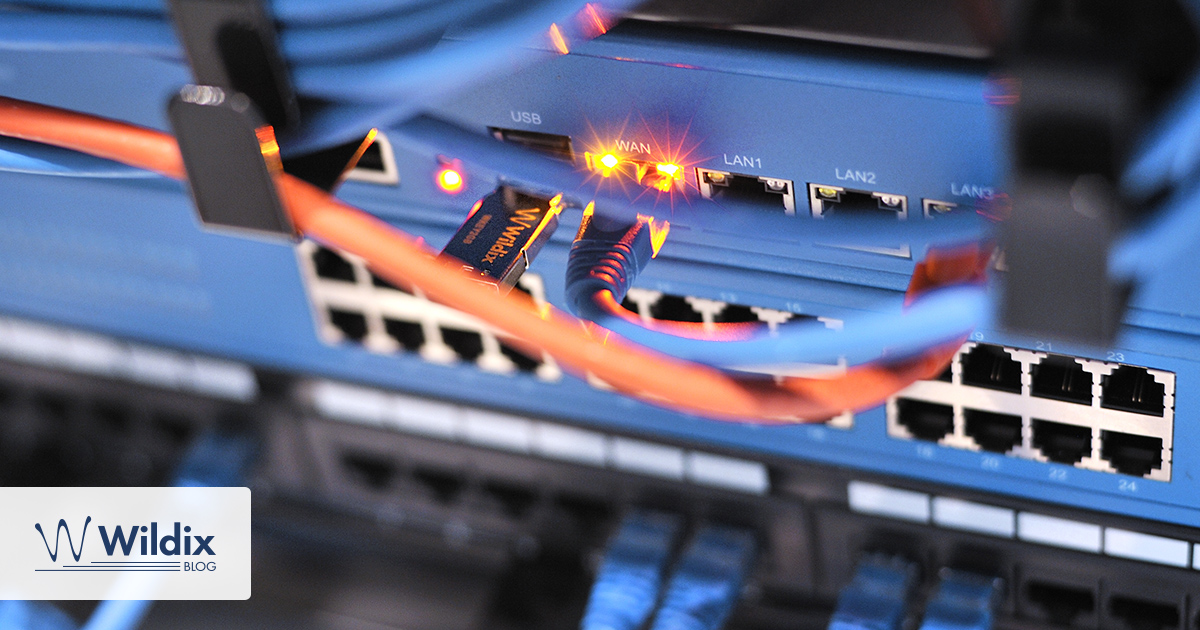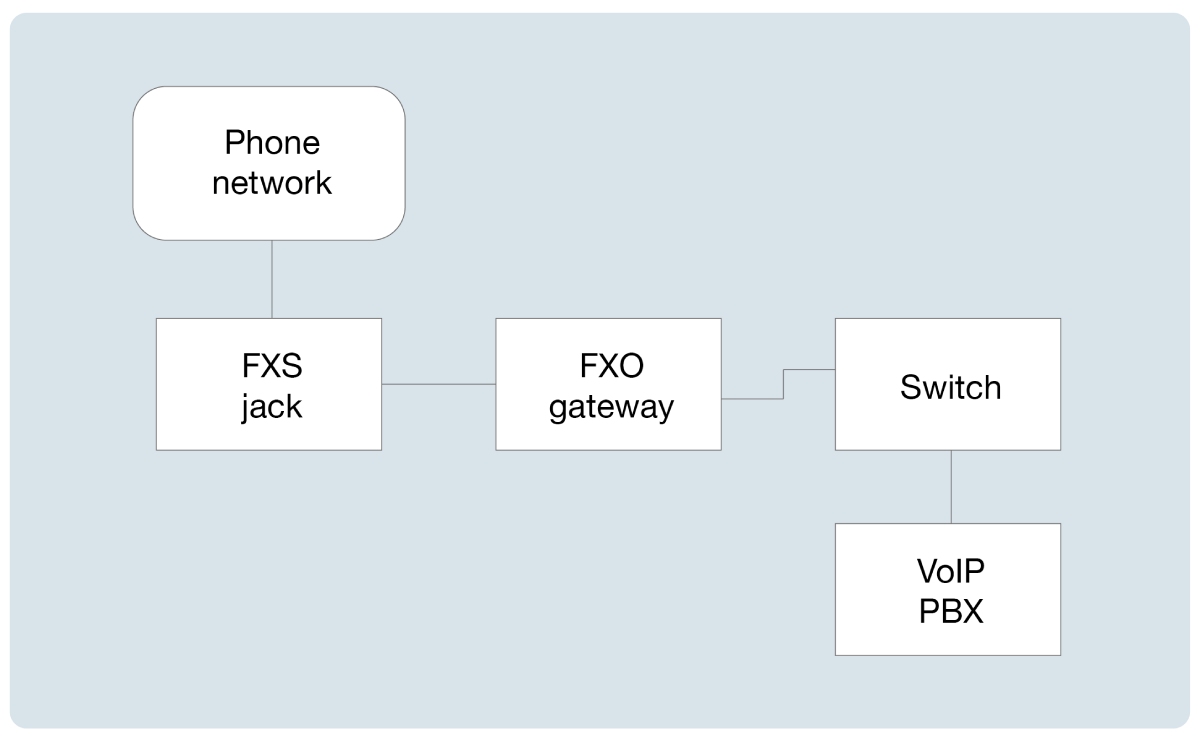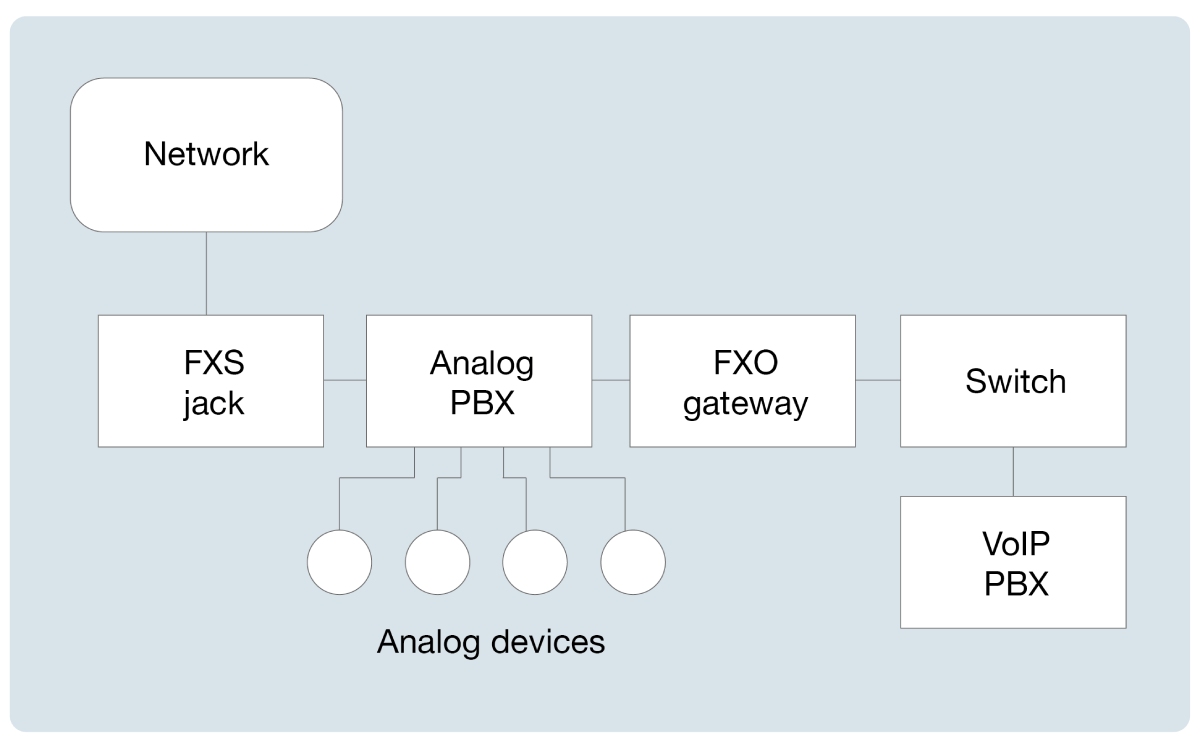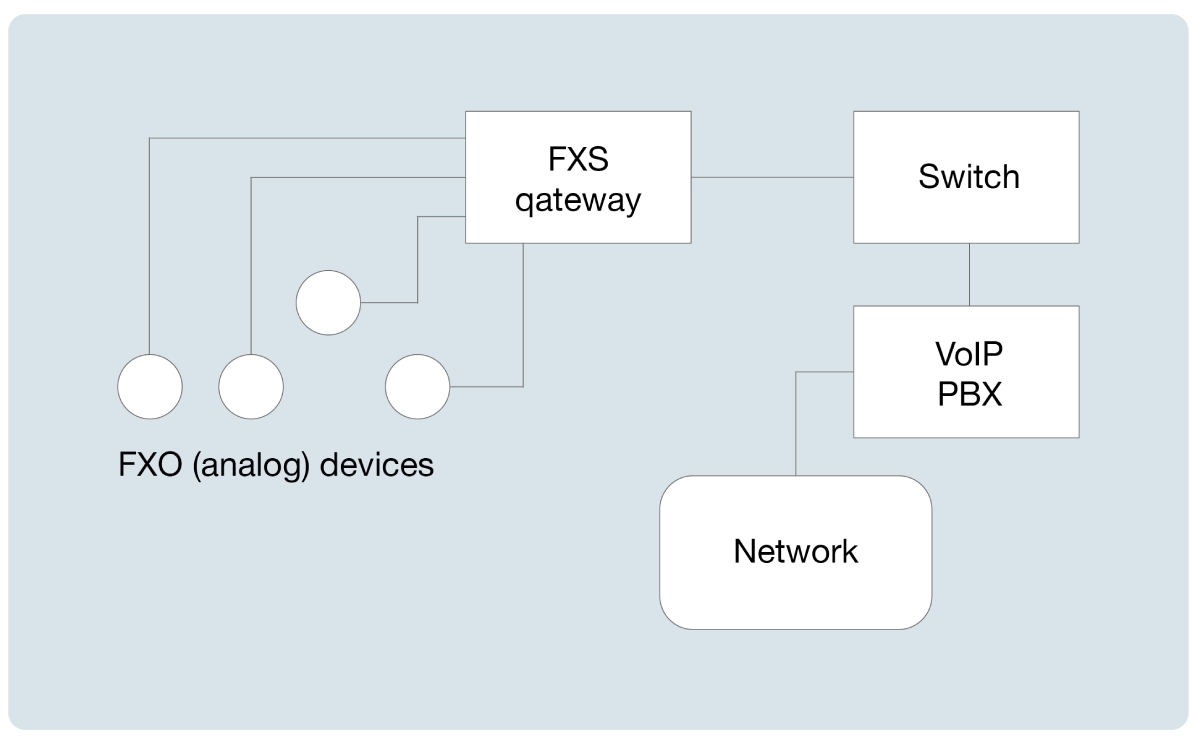
Analog telephony as a whole may be on its way out, but for numerous organizations, it’s still an important part of communications. For many, it’s so important that even when switching to a VoIP network, completely phasing out analog lines or devices simply isn’t an option. In those cases especially, it’s absolutely vital to understand FXO and FXS ports — in particular, the differences between them.
Grasping the FXO vs. FXS difference isn’t only important for building connections with analog phones, either. Perhaps more importantly, these technologies are critical to moving to an IP-powered solution, such as VoIP. With a proper understanding of FXO vs. FXS, it’s even possible to move entirely to an internet-based phone connection while still using your existing analog devices.
Keep reading to learn exactly what these technologies are, how they work and the role that FXO vs. FXS porting plays when setting up a VoIP solution.
FXO vs. FXS: The Basics
Although there are more similarities than differences, there are still enough distinctions to make the question of FXS vs. FXO worth defining.
So, what are these two technologies?
FXS: Short for “foreign exchange subscriber,” FXS is a technology that connects analog phone devices to a wider analog telephony network, also called POTS (“plain old telephone system”). The most common example of FXS is a wall jack installed by the telephone company, but FXS can also refer to phone jacks in an on-premises PBX. Functionally, FXS delivers the dial tone, ringing voltage and battery power that analog telephony devices like phones and fax machines need to operate.
FXO: Short for “foreign exchange office,” FXO connects analog telephony devices within a local network — think phones and faxes that all share the same general circuit. More concretely, FXO is the technology in the plug outlets within phones and fax machines, and as a result, analog phone hardware are often called “FXO devices.” In practice, FXO receives telephone service and generates a loop closure by indicating whether the device is on-hook or off-hook.
FXS vs. FXO in VoIP
These definitions might make the “FXO vs. FXS” difference seem less like a contrast and more like two parts of a whole. And that’s because they are: FXO and FXS cannot operate apart from one another, and a working analog telephone system must always include both elements. If one is left out, the network will not function.
However, another caveat to reiterate is that FXO and FXS are applicable only to analog systems. Internet-based telephone solutions such as VoIP don’t require either component, because the only real function of both is to connect analog devices to analog phone networks. VoIP, on the other hand, connects digital devices to the internet, circumventing this need entirely.
So, why is the FXO vs. FXS question relevant to VoIP? In short, it matters if (and only if) you want to use a VoIP setup alongside analog components.
If you’d like to use a traditional telephony network and/or analog devices with VoIP, however, then we need to dig a bit more into FXS vs. FXO.
FXS vs. FXO for Ports
We’ve talked a fair deal about the ways VoIP can benefit any organization. For many organizations that want these advantages, however, existing investments in analog telephony can seem like an obstacle to making that switch.
Fortunately, understanding critical FXO vs. FXS differences when it comes to porting systems can easily solve this issue.
Using FXO and FXS ports, it’s possible to connect a VoIP PBX to an analog phone line and network. The setup isn’t especially complicated, either — functionally, it takes only a few extra steps compared to an VoIP-only setup.
Here’s how it works:
- Your FXS port — connecting your building to the main phone network — is plugged into an FXO gateway, which helps to direct telephony channels on your office network.
- The FXO gateway is connected to a switch, a device that translates digital and analog signals to understand one another.
- The switch is connected to your VoIP PBX, which can be on-premises or in the cloud, and provides the main functions of your local telephone system.
In effect, all you’ll need to negotiate IP telephony over an analog network is an FXO gateway to plug into your FXS wall jack, a switch and, finally, the actual VoIP PBX.
But suppose you want to connect analog devices to this network in addition to (or instead of) digital ones. Doing so is not only possible, it takes very little effort on top of the previous setup.
The network for that solution would flow as follows:
- FXS wall jack
- Analog PBX with FXO interfaces
- FXO gateway
- Switch
- VoIP PBX
With this setup, you can plug any analog phones, faxes or other telephony devices directly into the analog PBX at step 2 and use them over your VoIP connection.
Of course, this only works if you still have an analog PBX lying around. If that’s the case for you, then the setup above makes for a great way to keep it in use.
Don’t have an analog PBX in stock but still want to use analog devices? Then there’s no need to scour the used markets to find one — you can also hook those tools up to your VoIP network with the following setup:
- FXO device
- FXS gateway
- Switch
- PBX
So long as your analog FXO devices are plugged into that switch-connected gateway, they’ll function as normal. The difference is, they’ll run over your IP network rather than a separate, more difficult-to-manage POTS connection.
Wrapping Up
For anyone still making use of analog phones, faxes or connections, looking at this FXO vs. FXS difference is important to understand. An FXS interface — usually just a wall jack — connects a local phone setup to an external analog phone network, and from that connection provides the network’s dial tone and the main power supply for devices. FXO interfaces — the outlets on analog phones, fax machines and related hardware — are used to connect to an FXS port so the respective devices can reach the external phone network.
Even with these differences, however, FXO and FXS are useless when kept separate. For any analog phone setup, both FXO and FXS must be used in tandem, or else the network will be incomplete.
Although FXO and FXS serve no purpose for pure VoIP systems, they can still be used to connect VoIP PBXs or devices to an analog network. Similarly, they can also connect analog phones and faxes to a VoIP network in case an organization wants to continue using those devices over an IP phone connection.
As complicated as such a setup can sound, they can actually take little time or effort to install properly given the right hardware. Fortunately, Wildix has exactly this line of hardware available from beginning to end.
This lineup includes an FXO media gateway and three models of FXS media gateways, as well as switches with up to 24 ports. These are in addition to Wildix PBXs, which are available on-premises, in the cloud or as a hybrid of both.
So long as you use analog telephony in any form, however, both FXO and FXS will still be essential. With the proper understanding of how these technologies each work, it’s possible to continue using analog phone lines and devices, and even combine that investment with the greater benefits of a VoIP phone connection.
For more tips on telephony and voice technology, subscribe to receive our magazine for free!


